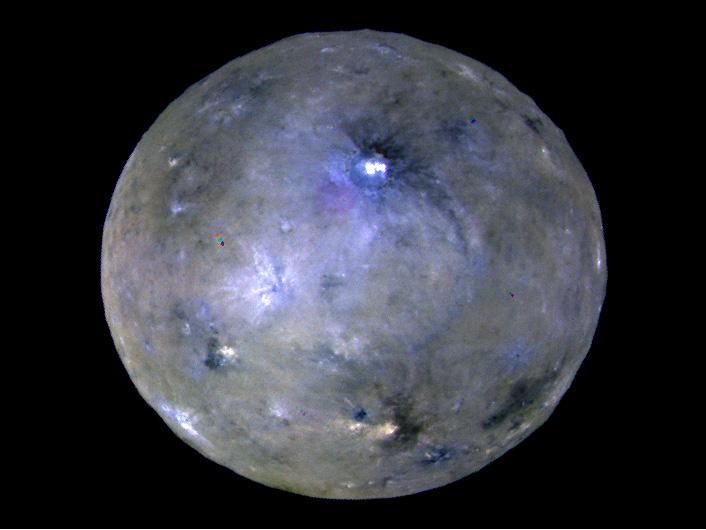Ceres might have tilted over onto its side

Enlarge / An enhanced color view of Ceres, which highlights different terrain on its surface. (credit: NASA/JPL-Caltech/UCLA/MPS/DLR/IDA)
Prior to our visit to the dwarf planet Ceres, we knew that it had a density about twice that of water. Considering it likely has a rocky core, that means much of its outer crust is likely to be water. Since water is pretty malleable at the temperatures we'd expect to prevail on Ceres, there were some expectations that any features on the planet had long since flattened out as the ice they were made of flowed downwards as it does in glaciers.
This turned out to be anything but the case, as Ceres is covered in craters, ridges, and the remains of what appear to be ice volcanoes. All of which suggests that the crust is far more rigid than we thought and has a composition that's more complex than simply water with some dust mixed in.
Now, a researcher named Pasquale Tricarico has analyzed the distribution of material on Ceres and found that it is consistent with the densest material having caused the relocation of the planet's equator. He suggests that a series of ridges that ring the dwarf planet represent the former equator, which would mean that Ceres tipped over on its side at some point early in its history.
Read 7 remaining paragraphs | Comments